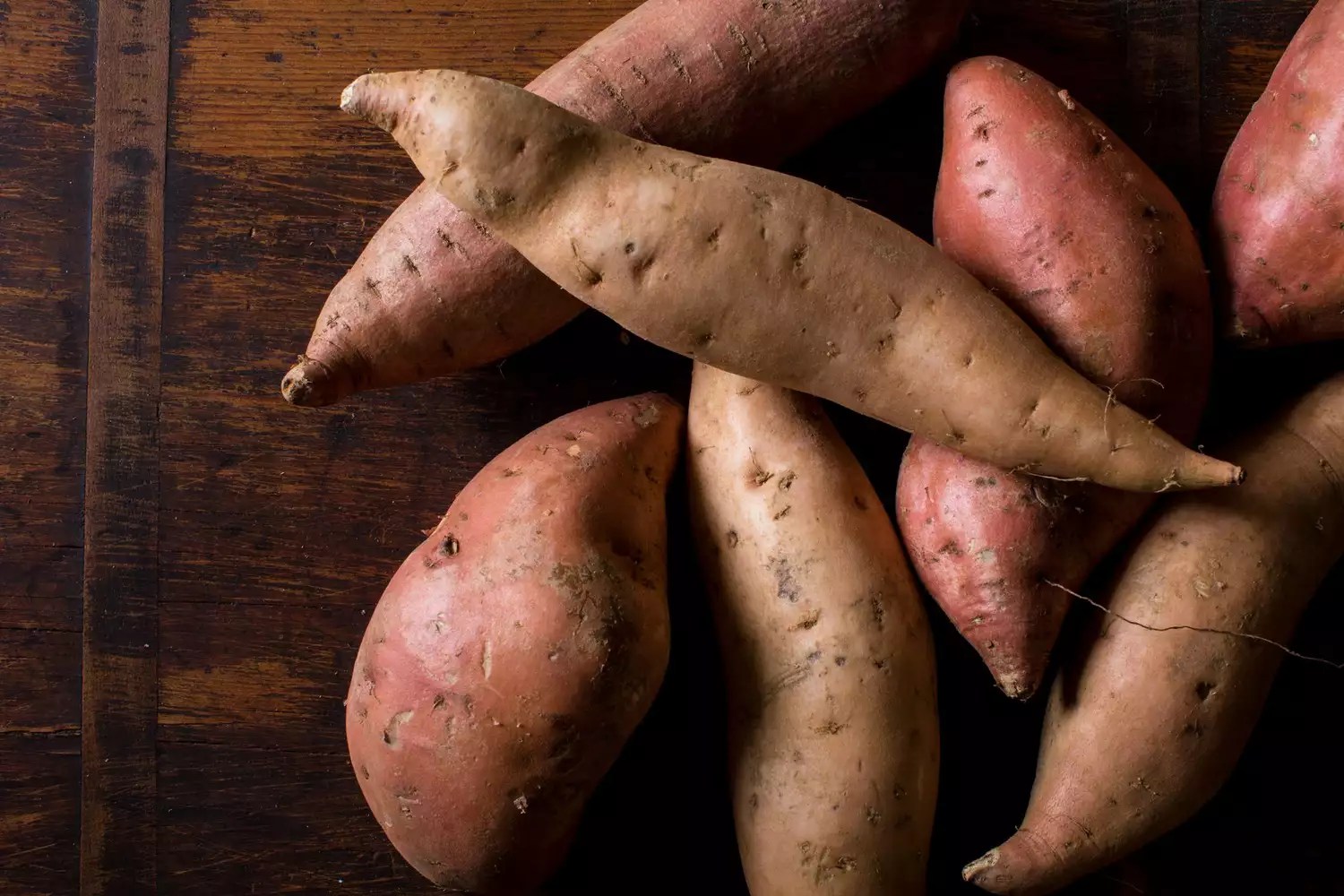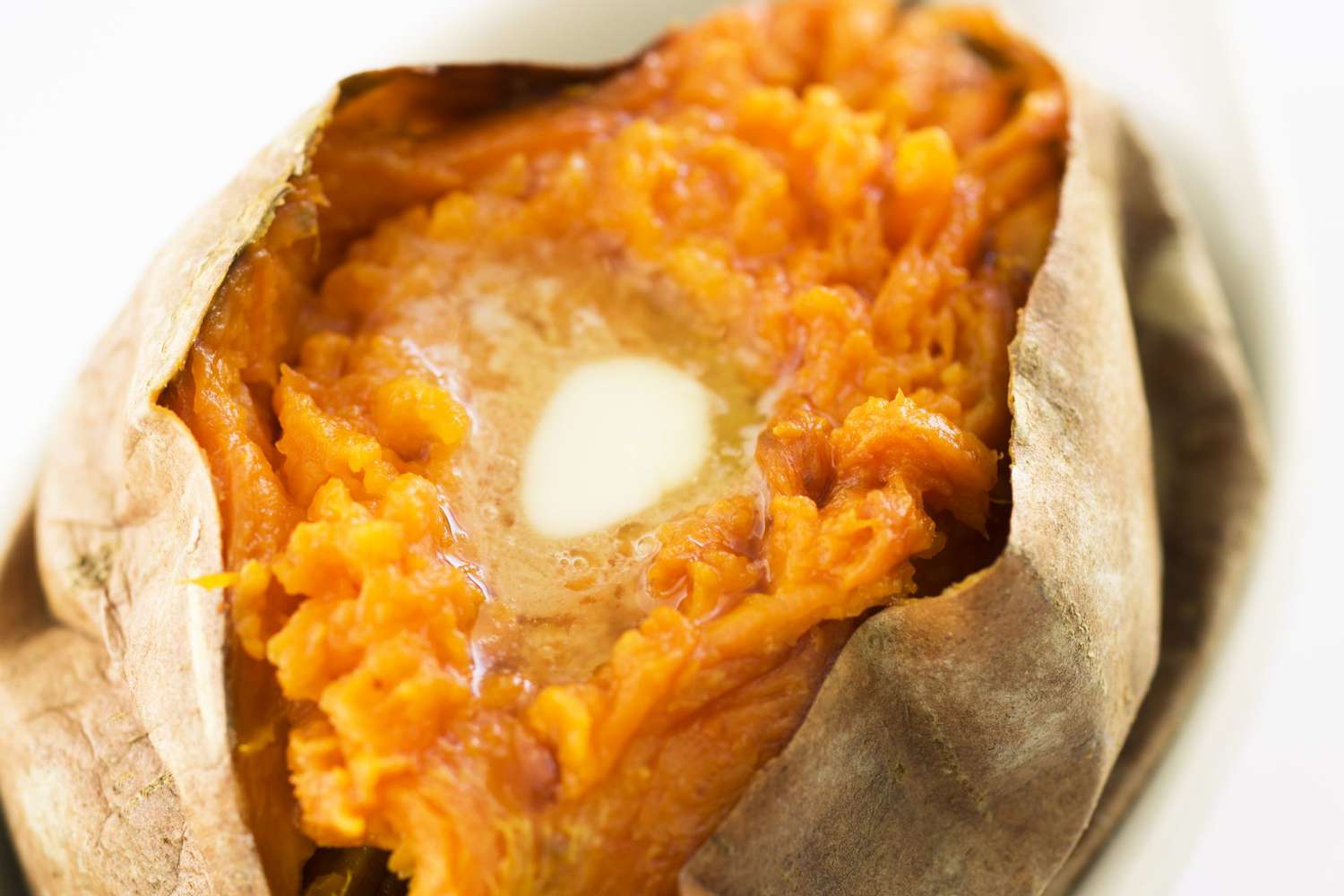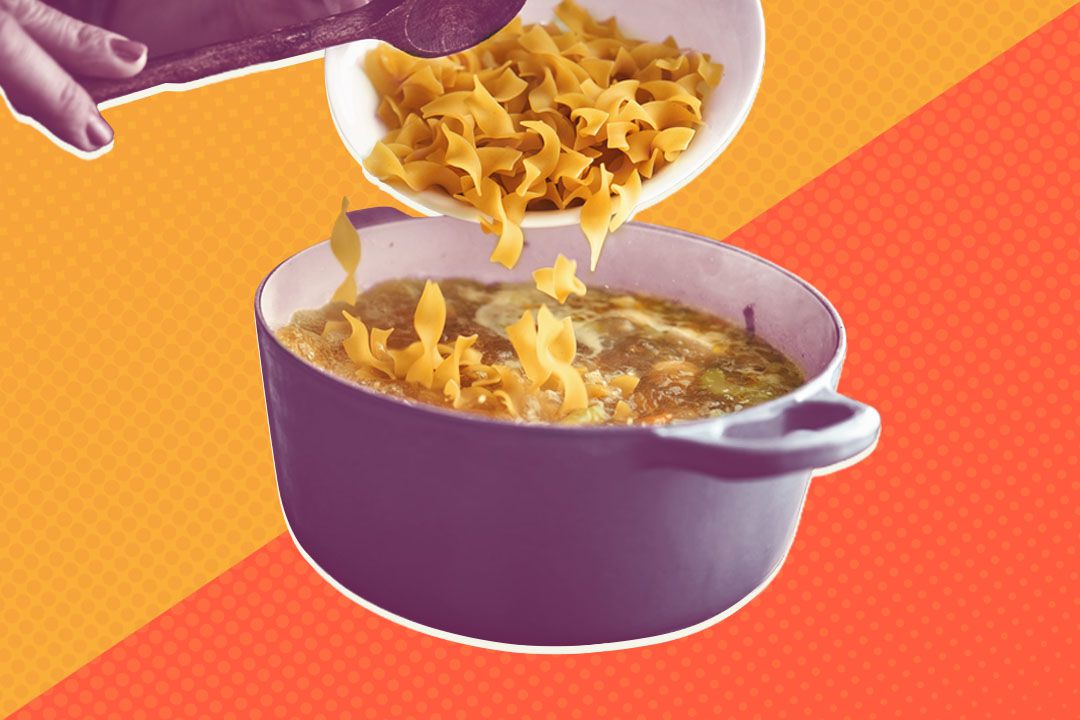I don’t have to tell you about the information overload when it comes to cooking and baking topics on the internet. Whatever the ingredient, there’s likely more “hacks” for cooking with it than any one person knows what to do with — some are valid, and others less so.
So, I wasn’t immediately sold upon hearing about freezing whole sweet potatoes prior to cooking. In fact, I definitely shook my head at the mere thought of freezing and then baking a sweet potato…for three hours. What kind of trickery could this be? Even stilI, I was intrigued — intrigued enough to try it for myself. And folks, I’m pleased to report that freezing a sweet potato does actually have a few sweet perks, especially if you like to bake!
First, What Is a Sweet Potato?
Let’s go ahead and establish this: Sweet potatoes are not a type of potato. While both sweet potatoes and white potatoes are tubers that hail from Central and South America, they’re not even close cousins. “Regular” potatoes are from the nightshade family (more closely related to tomatoes than to sweet potatoes) and the sweet potato is from the morning glory family. Europeans originally coined sweet potatoes as such to distinguish them from starchier, white-fleshed potatoes as the two root vegetables do share a similar look fresh from the ground.
Sweet potatoes are incredibly rich in vitamin A, vitamin C, and dietary fiber. And they can be prepared in a wide variety of ways, from boiling and mashing to dicing and roasting.

Why You Should Even Consider This Method…
I was skeptical at first, as who has this much time on their hands? But having tried the frozen sweet potato method, I understand the appeal: Baking a sweet potato from frozen yielded a fluffily-textured spud that wasn’t saturated with moisture. I had two Covington sweet potatoes (developed in my backyard at North Carolina State University!) and decided to give this method a whirl. Three hours later, I compared the sweet potato I baked as usual to my frozen-then-baked sweet potato. The difference was noticeable enough to warrant doing it again, despite the time commitment.
If you’re serious about baking and enjoy incorporating sweet potato into items like quick breads, scones, and cakes, this is a fantastic method to utilize for the fluffier consistency alone. Of course, the aroma and perfectly dispersed flavor, thanks to science (we’ll touch on that below!), doesn’t hurt either. For the bakers, the freeze-then-bake method dries out excess water so the texture of the potato’s flesh is super fluffy versus wet and dense. In turn, this will lend a lighter texture to the baked good you plan to incorporate sweet potato into.
And for those simply looking to bake sweet potatoes for dinner, I find that in addition to a more appealing texture, the frozen-then-baked potato presents a more rounded flavor, instead of pockets of sugary sweetness.
How Does It Work?
Sweet potatoes contain a significant concentration of maltose, a naturally produced sugar. Thanks to chemistry, freezing a sweet potato allows ample time for amylase enzymes — an enzyme that converts glycogen and starch into simple sugars — to convert starch into a deliciously sweet-tasting maltose. Think of it like a slow-and-low method where excess water is forced out of the sweet potato, resulting in an airier texture and a more intense flavor.
Once the potato is removed from the freezer, it goes directly into the oven, wrapped tightly in aluminum foil, where it cold cooks while the oven heats up to 300 degrees F for two hours. After baking at a relatively low temperature, the oven should be cranked up to 450 degrees F while the potato bakes for an additional 40 minutes, shedding the aluminum foil for maximum caramelization.
After baking, there was a noticeable air pocket between the skin and the flesh of my sweet potato — a direct result of the moisture exiting the sweet potato, and sugars were oozing out of the skin like crazy. The skin, by the way, was an outstanding treat (more so than a regular baked sweet potato because of the extra sugars seeping out).

Get the recipe:Sweet Potato Pecan Pie
Verdict? A beautiful, fluffy, sweet (but perfectly balanced) sweet potato that is begging to be the star of the show as a side dish or in a holiday pie or dessert. Grandma might not be able to detect a difference, or even care, but if you’re into science and baking, this is a method you’ll quickly learn to appreciate.
How to Properly Freeze and Cook Sweet Potatoes
At this point you’re invested…or you’re not! In the case that you’re still reading, here’s how to freeze and bake sweet potatoes for yourself.
Directions:
- Scrub sweet potatoes, let dry, and place in the freezer for 3 hours minimum. (They can be stored in the freezer for several months, if desired.)
- Set oven temperature to 300 degrees F. Wrap aluminum tightly around the sweet potato(es), and immediately place in the oven. (Do not wait for the oven to heat up, this is important!) Bake for 2 hours.
- Remove aluminum foil and increase the oven temperature up to 450 degrees. Bake for another 40 minutes or until the potato is easily pierced by a fork.
Pros:
- Yields an exceptionally fluffy-textured sweet potato
- Removes excess water, so less wet for baking
- More concentrated flavor, and evenly dispersed sweetness throughout the potato
- The freezer is a great place to store sweet potatoes so they don’t spoil
Cons:
- Takes almost 3 hours of oven time after freezing




